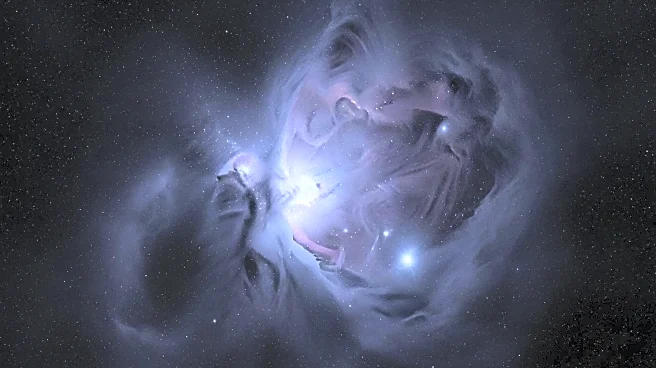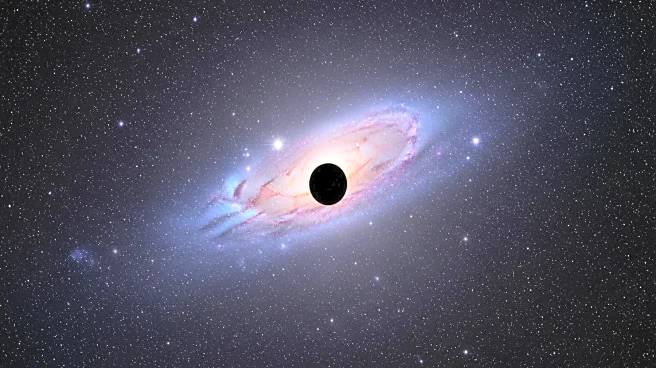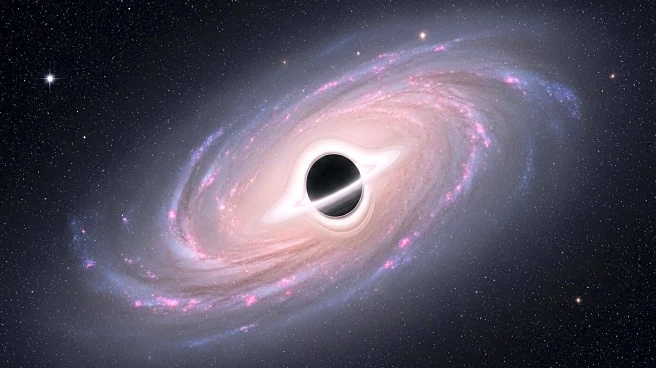What's Happening?
Astronomers have discovered what could be the smallest clump of pure dark matter yet detected, with a mass about one million times that of the Sun. This object, located roughly 10 billion light-years away, was identified through a gravitational distortion in an Einstein ring around a distant galaxy. The absence of stars suggests it is a 'pure' dark matter clump, devoid of luminous matter. The discovery was made using a global array of radio telescopes, which provided unprecedented detail of the Einstein ring. Algorithms were employed to create a gravity map, revealing a small notch in the radio emission of the ring, indicating the presence of this dark matter clump.
Why It's Important?
This discovery is significant as it provides insights into the nature of dark matter, a mysterious substance that makes up a significant portion of the universe's mass. Understanding dark matter is crucial for cosmology and astrophysics, as it influences the formation and behavior of galaxies. The identification of such low-mass objects helps refine models of dark matter, particularly cold dark matter models, which propose slowly moving particles capable of forming starless halos. This finding could lead to further discoveries and enhance our understanding of the universe's composition and the role of dark matter in cosmic evolution.
What's Next?
The discovery opens new avenues for dark matter research, with astronomers expecting to find more such clumps. The identification of low-mass dark matter objects is crucial for understanding the nature of dark matter and refining existing models. Future observations and studies may focus on detecting similar objects and exploring their properties, which could provide further insights into the behavior and characteristics of dark matter. This could lead to advancements in cosmological theories and a deeper understanding of the universe's structure.











